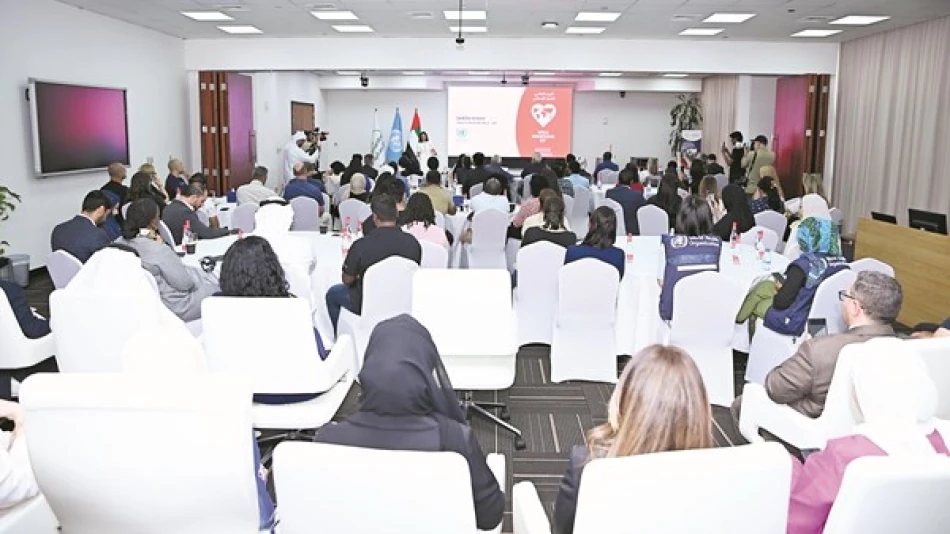
United Arab Emirates' Humanitarian Efforts Earn Global Acclaim
UAE Emerges as Global Humanitarian Powerhouse with $100 Billion in Aid Since Independence
The United Arab Emirates has cemented its position as one of the world's most significant humanitarian donors, having provided over $100 billion in foreign aid since its founding through 2024, reaching more than one billion people across 206 countries. This massive commitment, revealed during World Humanitarian Day celebrations in Dubai, positions the Gulf nation as a critical player in global crisis response at a time when humanitarian needs are reaching unprecedented levels worldwide.
The Scale of UAE's Humanitarian Commitment
The UAE's humanitarian footprint extends far beyond traditional donor relationships. According to the Ministry of Foreign Affairs, 80% of the country's foreign assistance focuses on developmental aid, with the remainder allocated to emergency relief and humanitarian assistance. This strategic allocation reflects a long-term approach to addressing root causes rather than merely responding to crises.
Rashid Al Humairi, Director of Development and International Cooperation at the Ministry of Foreign Affairs, emphasized that these figures demonstrate the UAE's "pivotal role in responding to humanitarian distress calls worldwide." The country has been particularly active in Yemen, Sudan, and Gaza, with UAE aid comprising more than 45% of all humanitarian assistance to Gaza since the current conflict began.
Dubai: The Logistics Hub for Global Relief
Dubai Humanitarian has emerged as a crucial infrastructure component in the global humanitarian supply chain. In the first half of 2025 alone, international organizations distributed $49 million worth of aid through Dubai's warehouses across 502 shipments to 81 countries. The facility currently maintains a stockpile worth approximately $210 million across more than 150,000 square meters of warehouse space.
This positioning leverages Dubai's strategic geographic location and advanced logistics infrastructure, enabling rapid deployment of aid to Asia, Africa, and the Middle East within hours rather than days. The model mirrors Singapore's approach to becoming a regional hub, but with a specific focus on humanitarian rather than purely commercial logistics.
A Strategic Response to Growing Global Needs
The UAE's humanitarian expansion comes as global needs reach crisis levels. The UN Office for the Coordination of Humanitarian Affairs reported that 2023 was the deadliest year on record for humanitarian workers, with 280 killed. The trend continues in 2024, with 176 relief workers killed, 93 injured, and 64 kidnapped globally.
This escalation in attacks on humanitarian personnel reflects broader challenges in conflict zones worldwide. In Gaza alone, 224 humanitarian workers have been killed since October 2023, according to UNRWA reports, highlighting the extreme risks faced by those delivering aid in active conflict zones.
Comparative Context: Gulf States and Humanitarian Diplomacy
The UAE's approach contrasts with other Gulf states' humanitarian strategies. While Saudi Arabia has increased its humanitarian spending significantly through initiatives like the King Salman Humanitarian Aid and Relief Centre, the UAE's model emphasizes infrastructure and logistics capabilities alongside financial contributions. This dual approach creates sustainable capacity for rapid crisis response.
Qatar's humanitarian efforts, while substantial, have focused more heavily on specific regional conflicts and refugee support. The UAE's broader geographic spread and emphasis on developmental aid suggests a more comprehensive approach to addressing global humanitarian challenges.
Economic and Strategic Implications
From an economic perspective, the UAE's humanitarian investments serve multiple strategic purposes. The country's positioning as a humanitarian hub strengthens its soft power influence while creating economic opportunities in logistics, warehousing, and related services. Dubai's emergence as a humanitarian logistics center parallels its success in commercial trade and aviation.
The World Food Programme's operations from the UAE illustrate this synergy. The organization shipped approximately 60,000 tons of aid from the UAE in 2025, including 27 diverse shipments to Gaza residents and additional aid to Sudan and various Asian countries. This volume demonstrates how humanitarian operations can create substantial economic activity while serving global needs.
Innovation in Humanitarian Response
The UAE is also pioneering new approaches to humanitarian engagement. The World Food Programme's "Humanitarian Leaders" initiative, launched from the UAE, includes six Emirati citizens who will play key roles in expanding humanitarian impact regionally and internationally. This model of citizen engagement in humanitarian work could serve as a template for other developed nations seeking to increase their humanitarian capacity.
Challenges and Future Outlook
Despite these achievements, significant challenges remain. The increasing targeting of humanitarian workers represents a fundamental threat to the international humanitarian system. The UAE's emphasis on protection for humanitarian workers and civilians reflects recognition that infrastructure and funding alone cannot address these security challenges.
The scale of current global crises—from ongoing conflicts in Gaza, Yemen, and Sudan to natural disasters and climate-related emergencies—suggests that even substantial commitments like the UAE's $100 billion may be insufficient without broader international coordination and increased contributions from other nations.
As humanitarian needs continue to grow and traditional donor fatigue affects Western nations, the UAE's model of combining financial resources with strategic infrastructure investment may prove increasingly valuable. The country's commitment to maintaining and expanding its humanitarian capacity positions it as a critical player in addressing global crises for years to come.
The UAE's humanitarian leadership also reflects broader shifts in global development assistance, with Gulf states playing increasingly prominent roles in international aid and crisis response. This trend suggests a more multipolar approach to humanitarian assistance, potentially reducing dependence on traditional Western donors while expanding overall global capacity for crisis response.
Most Viewed News

 Layla Al Mansoori
Layla Al Mansoori






